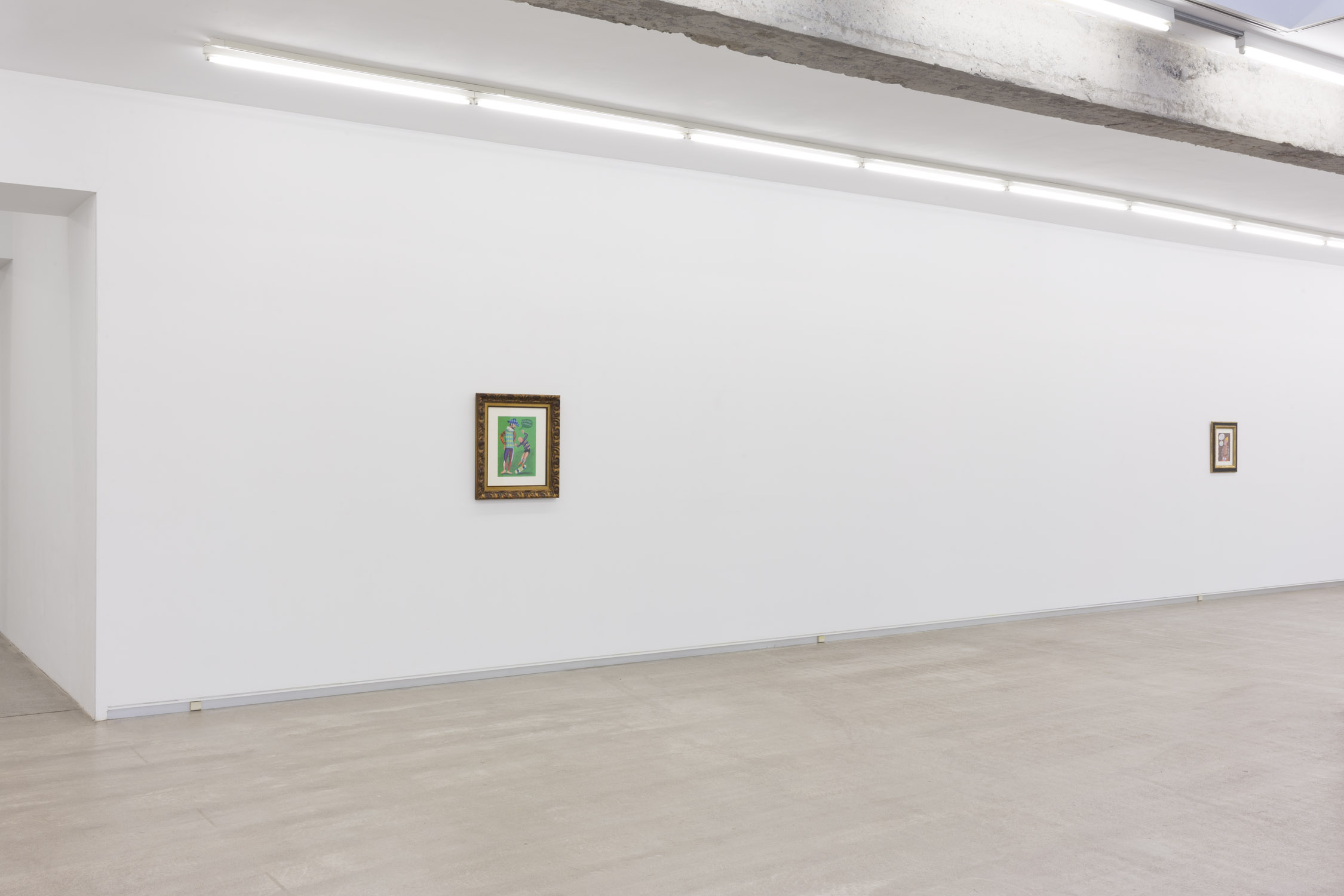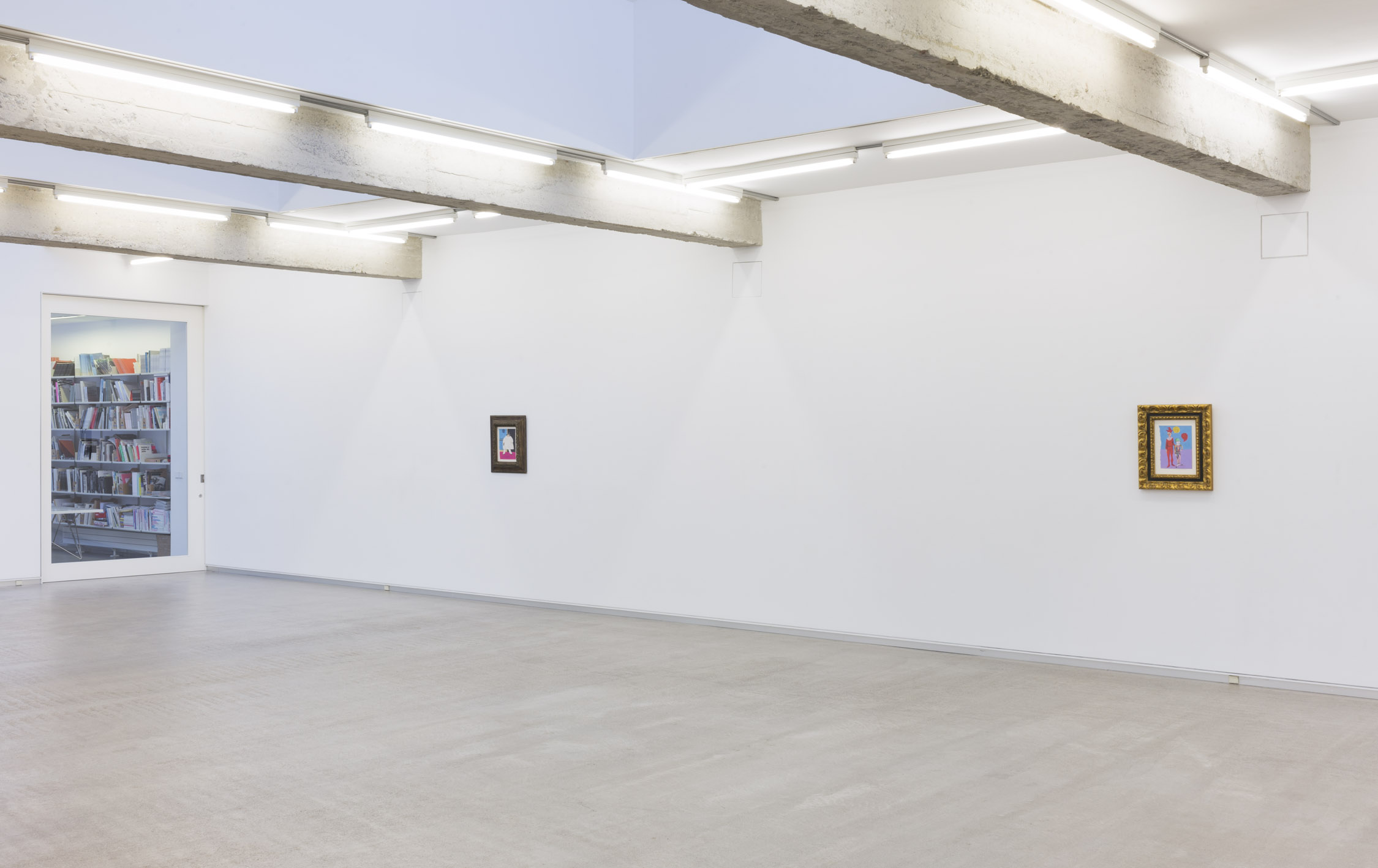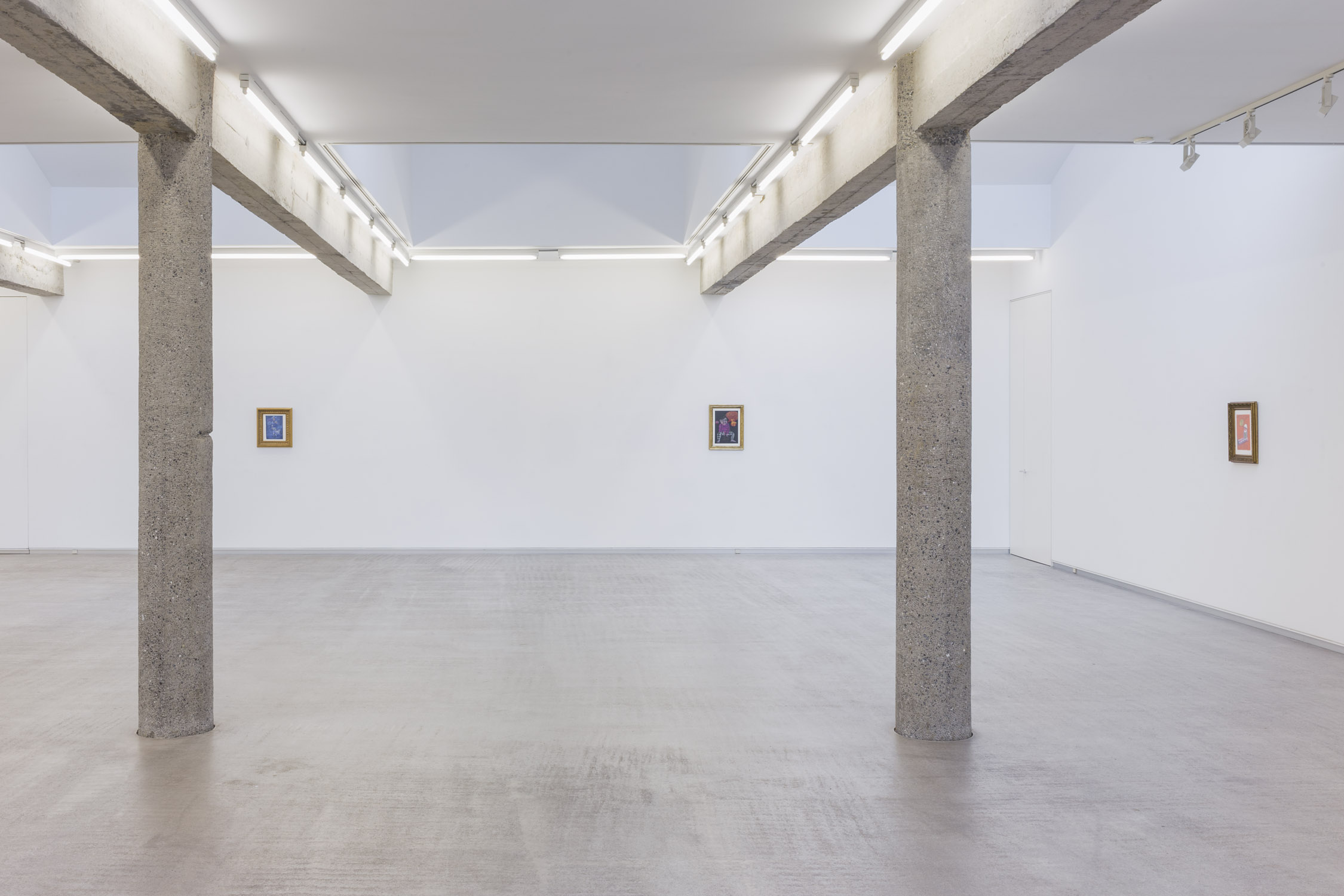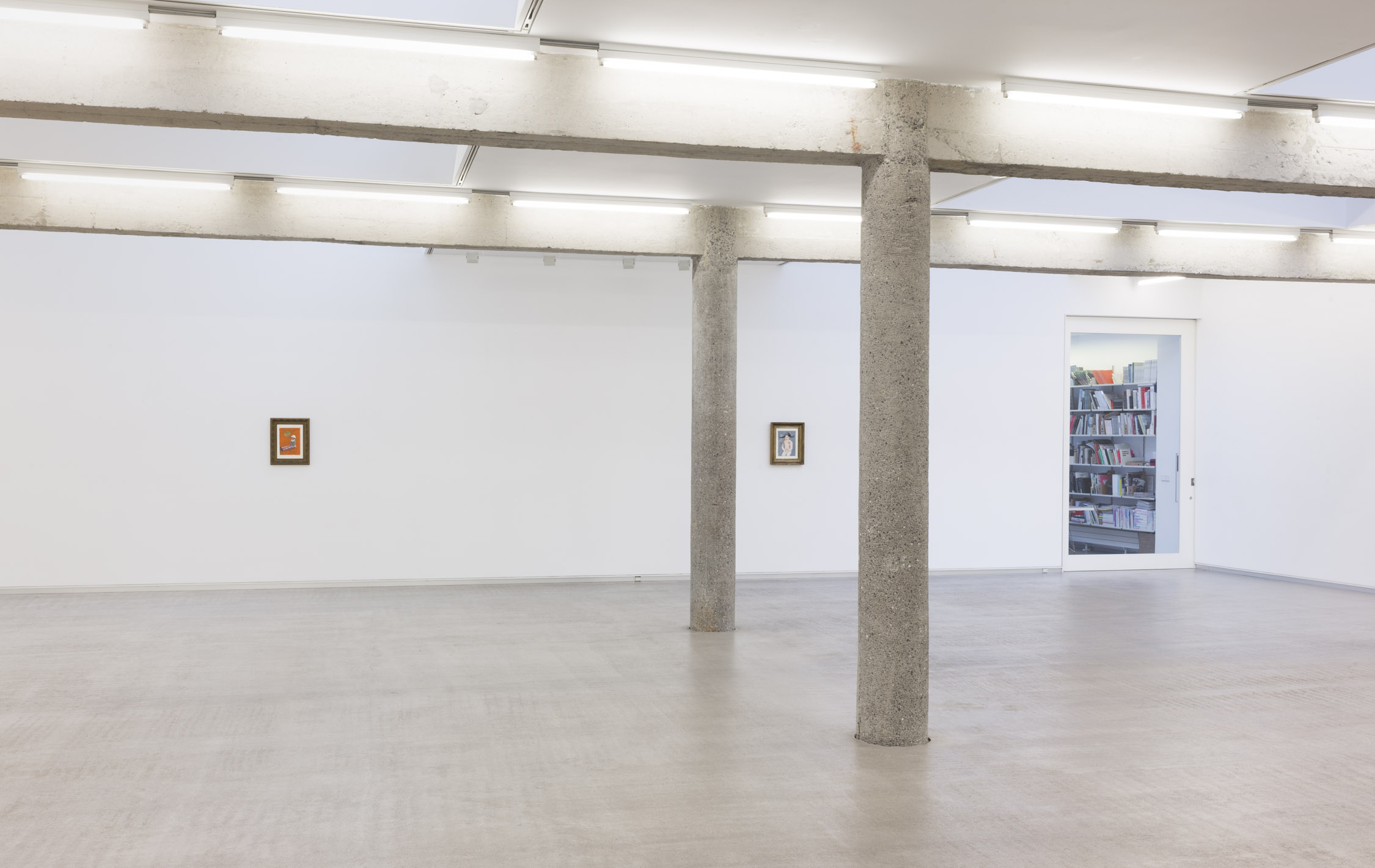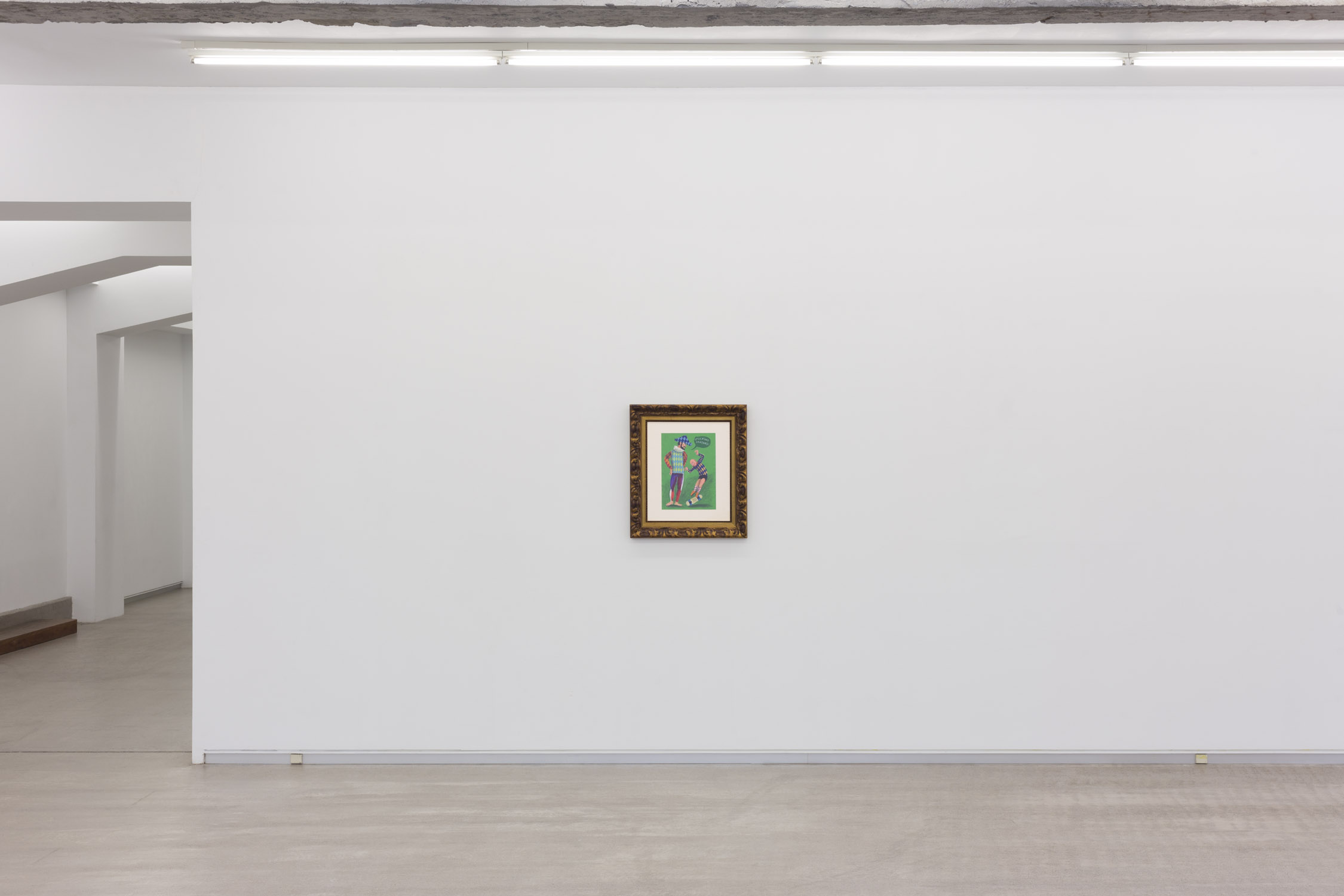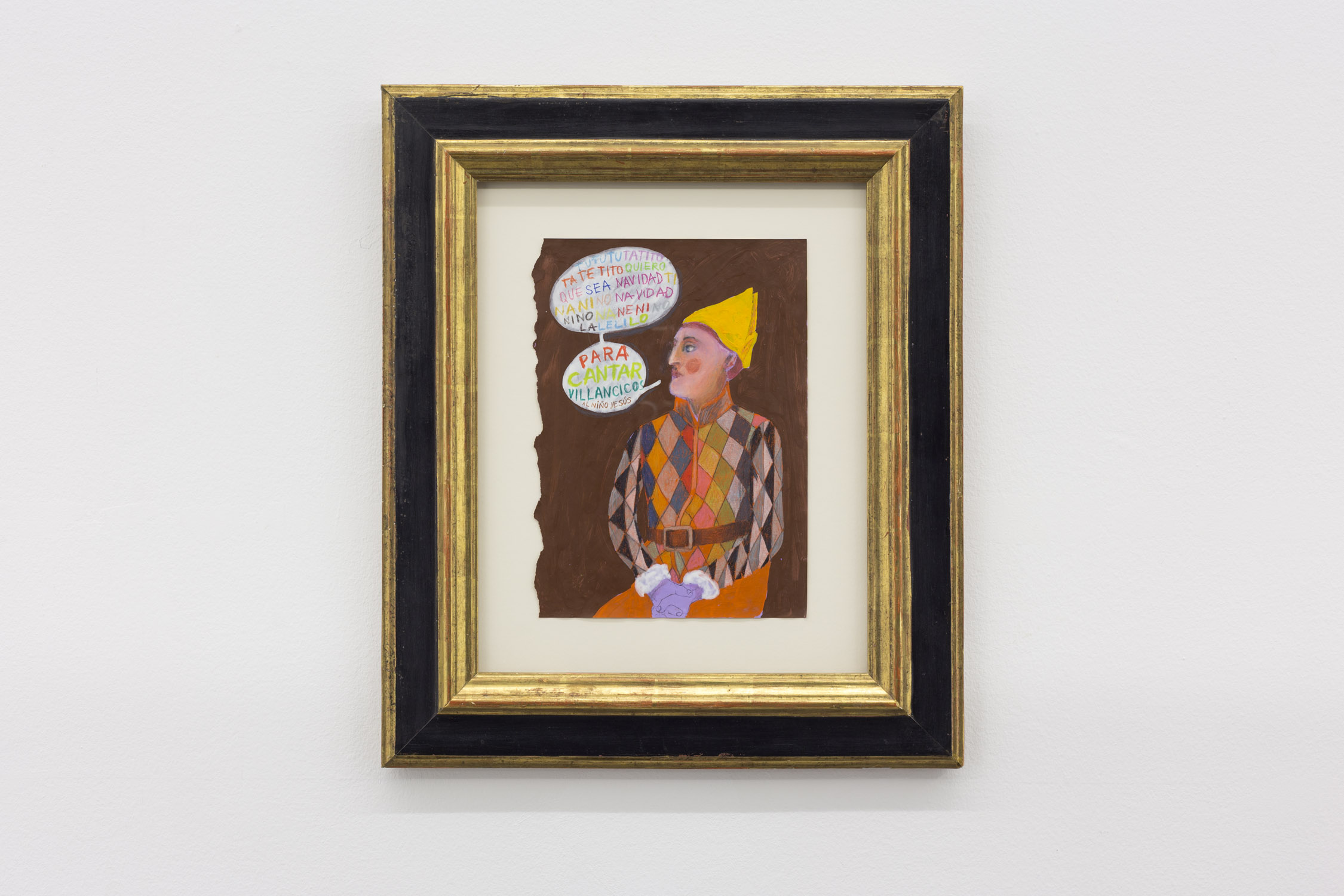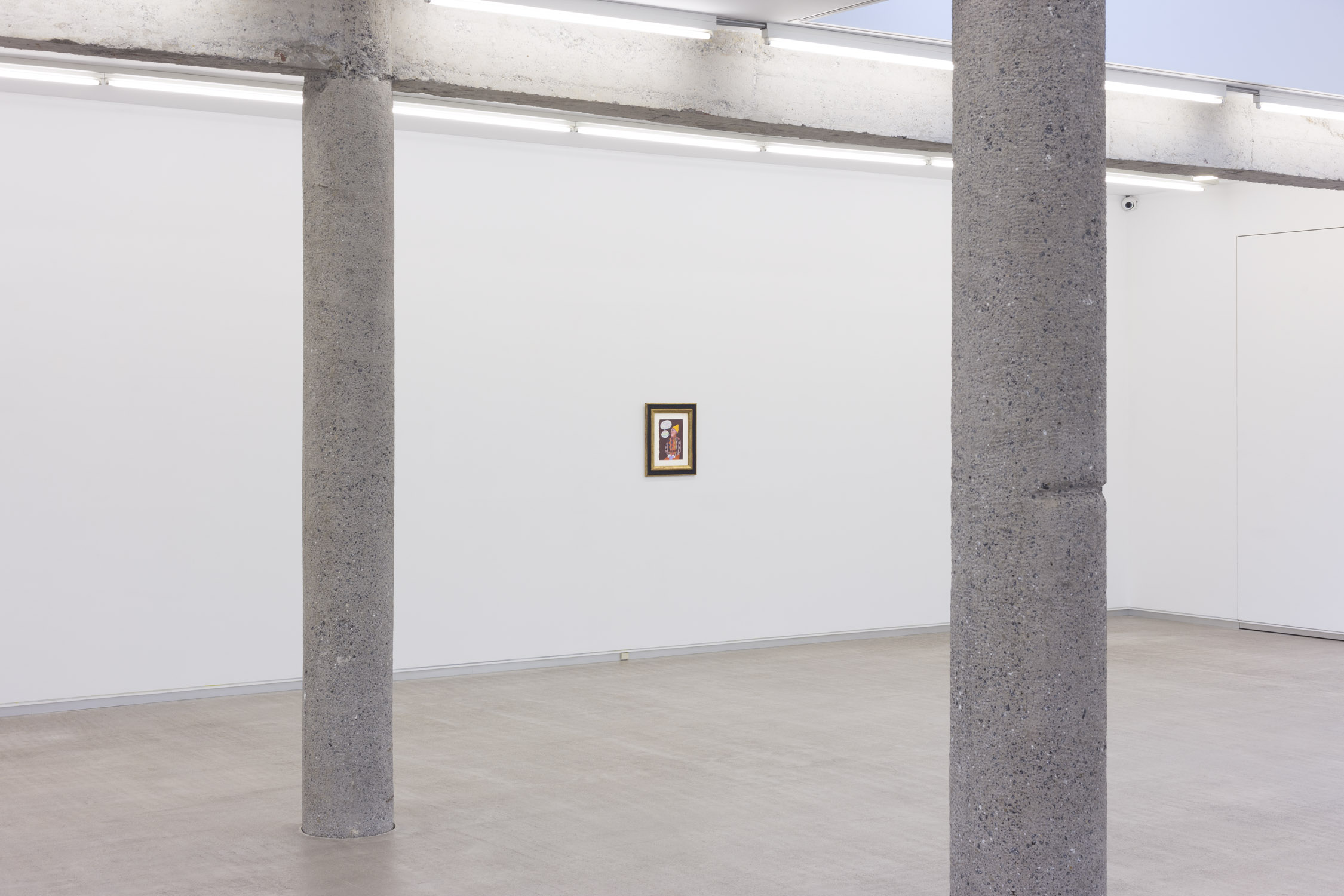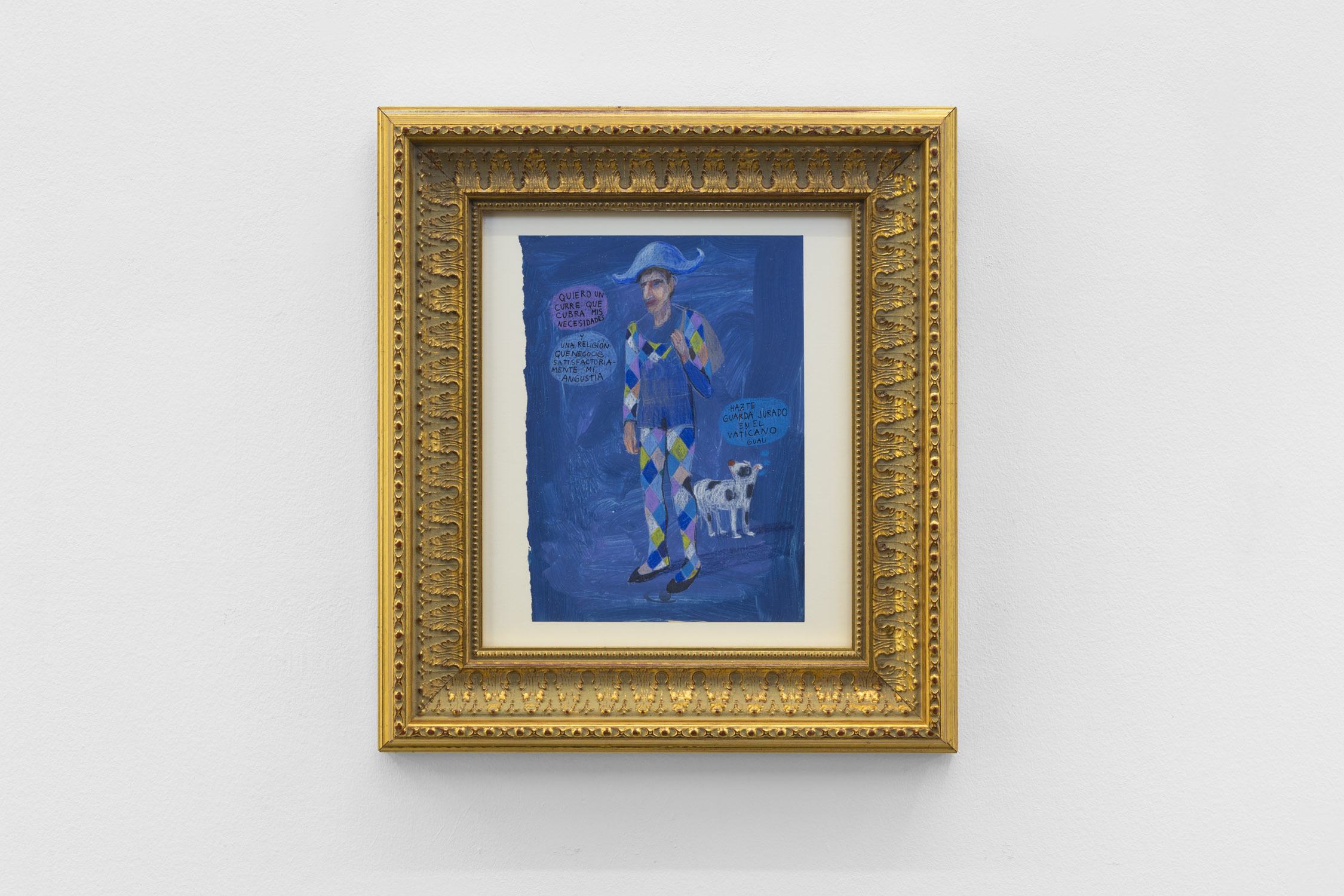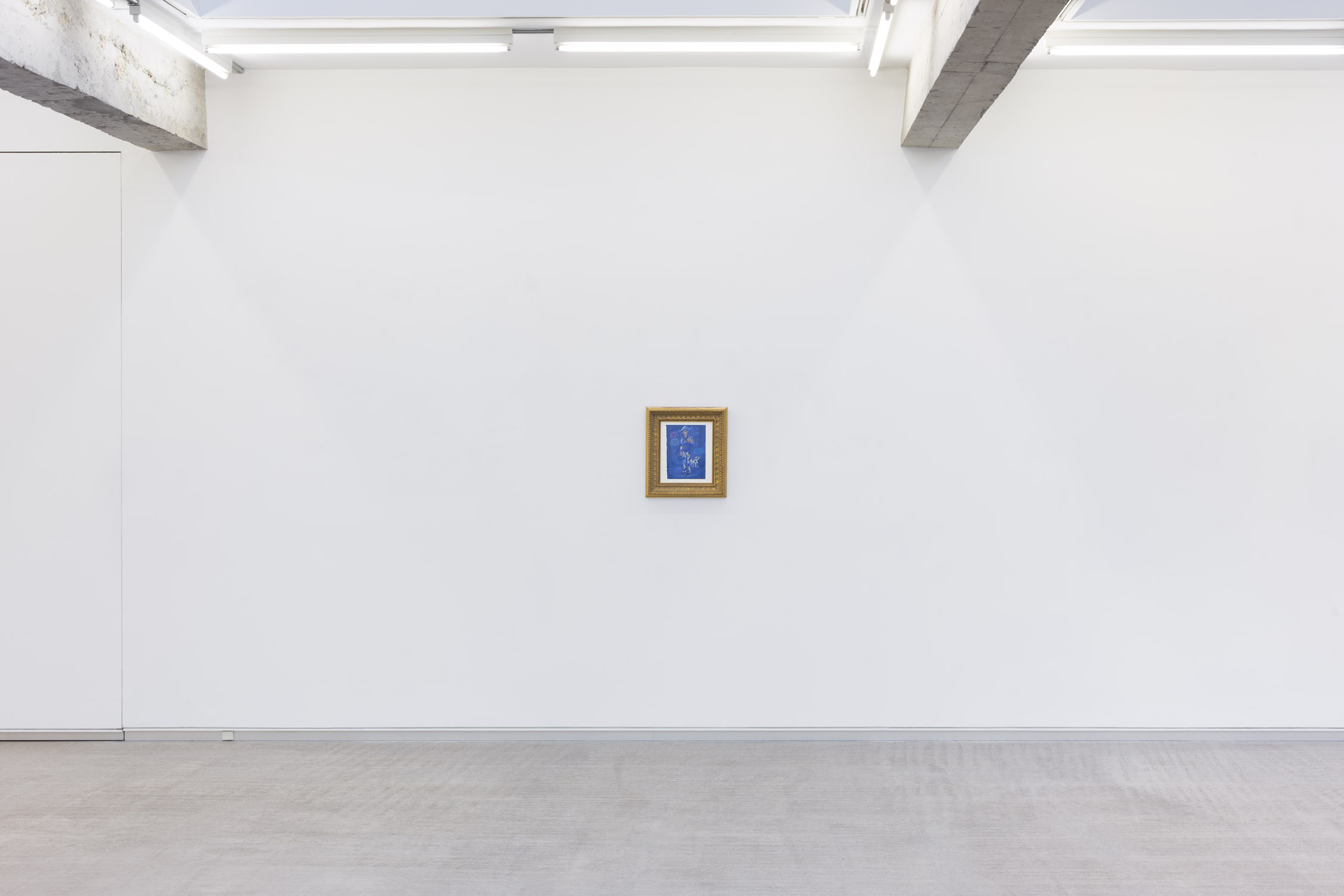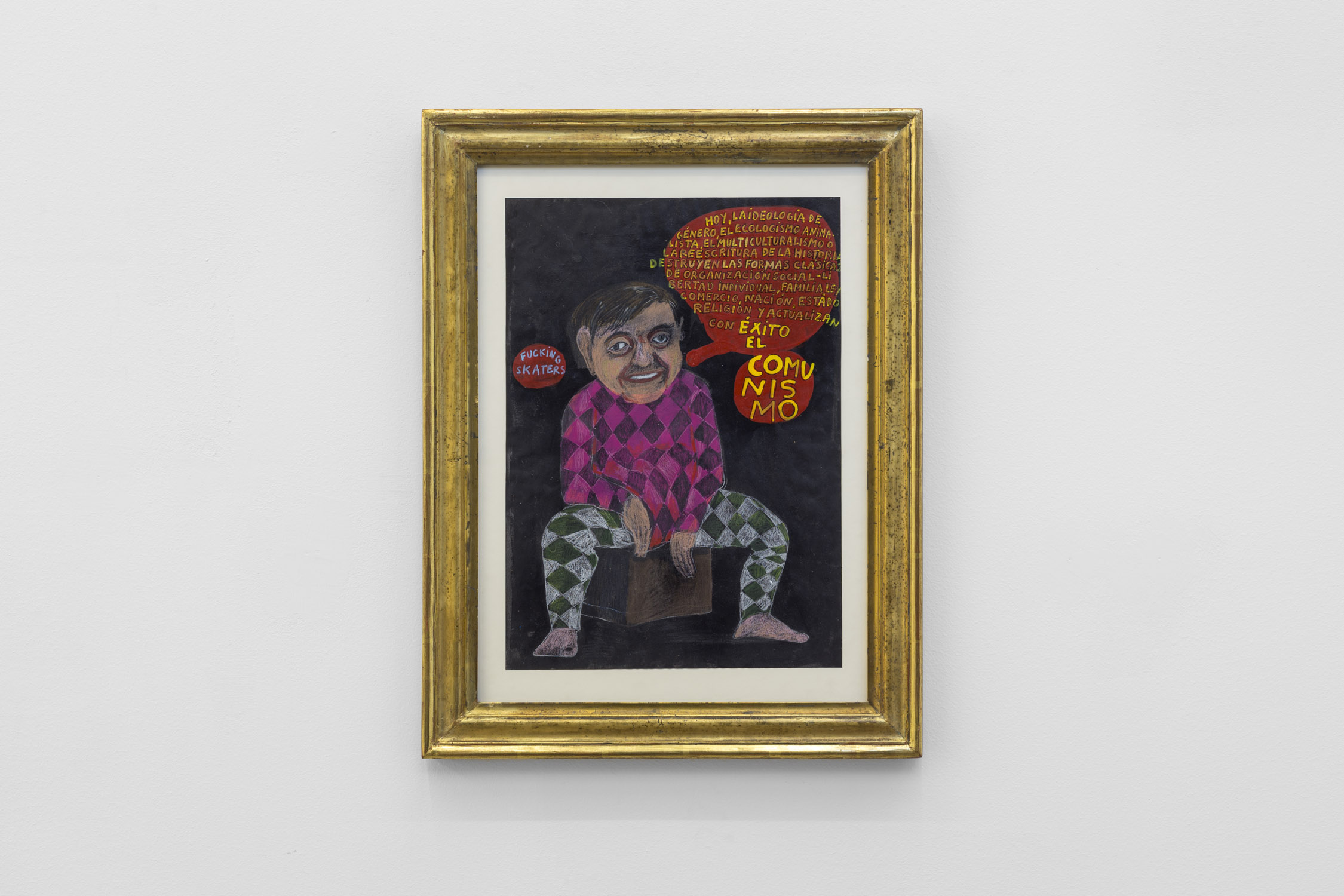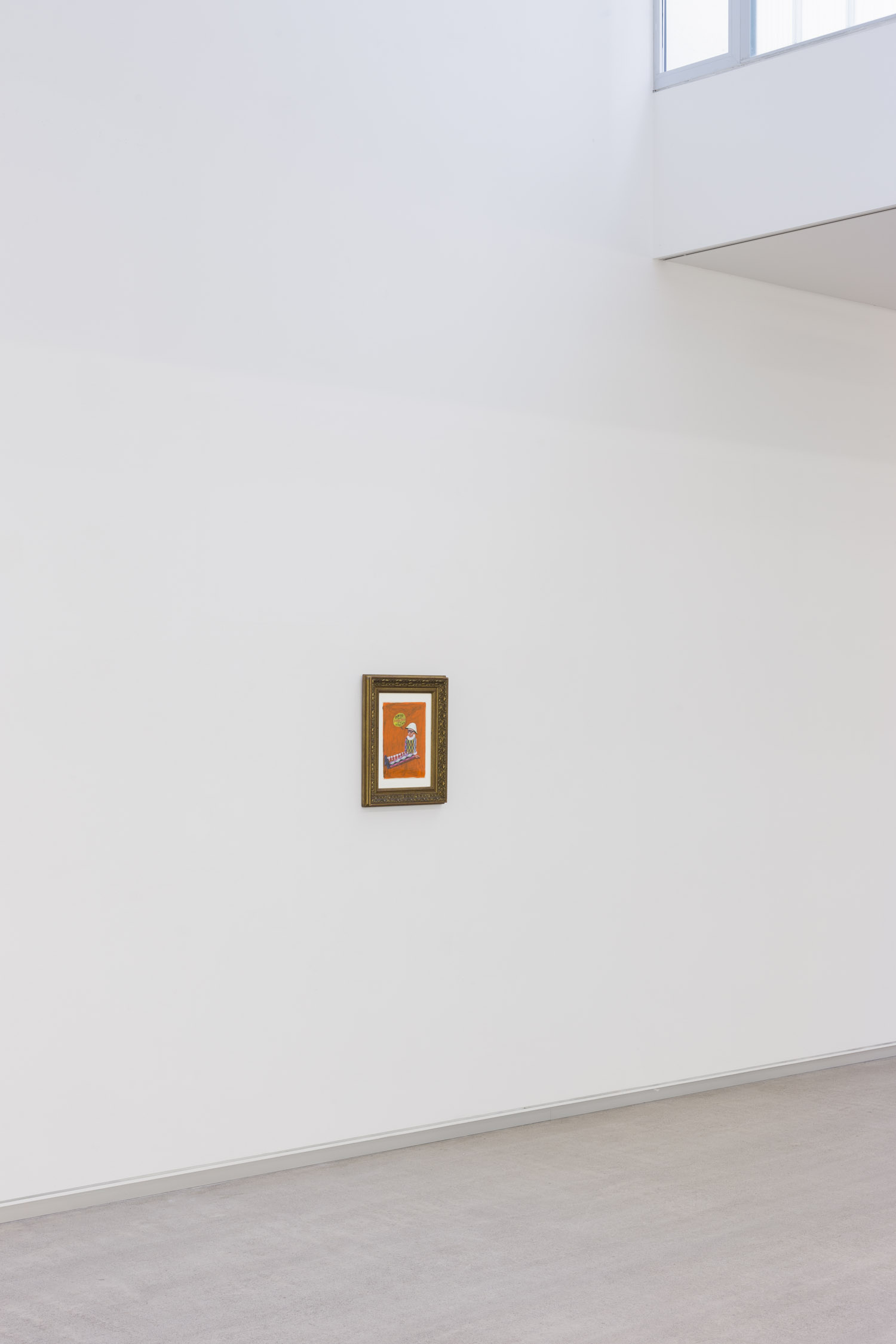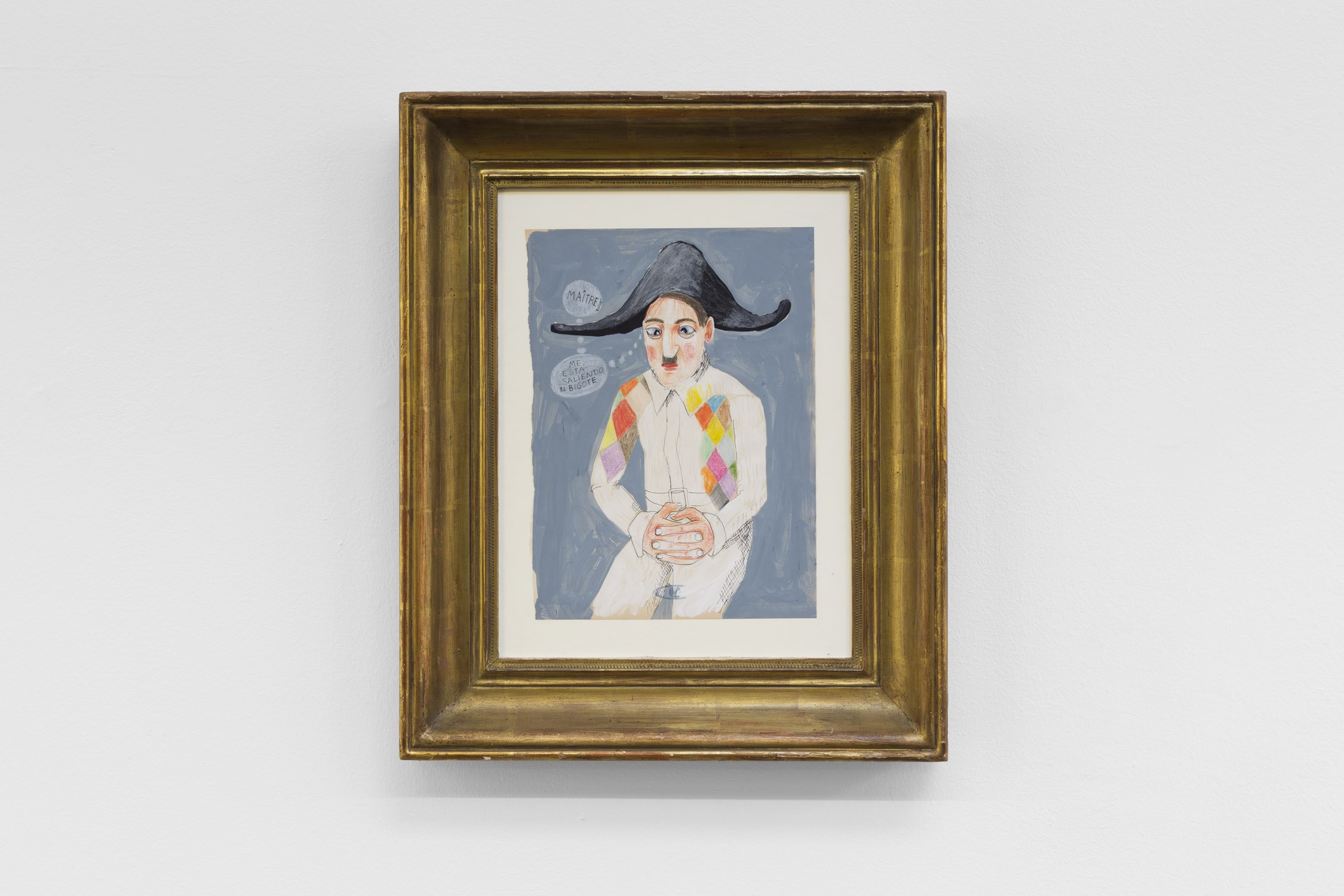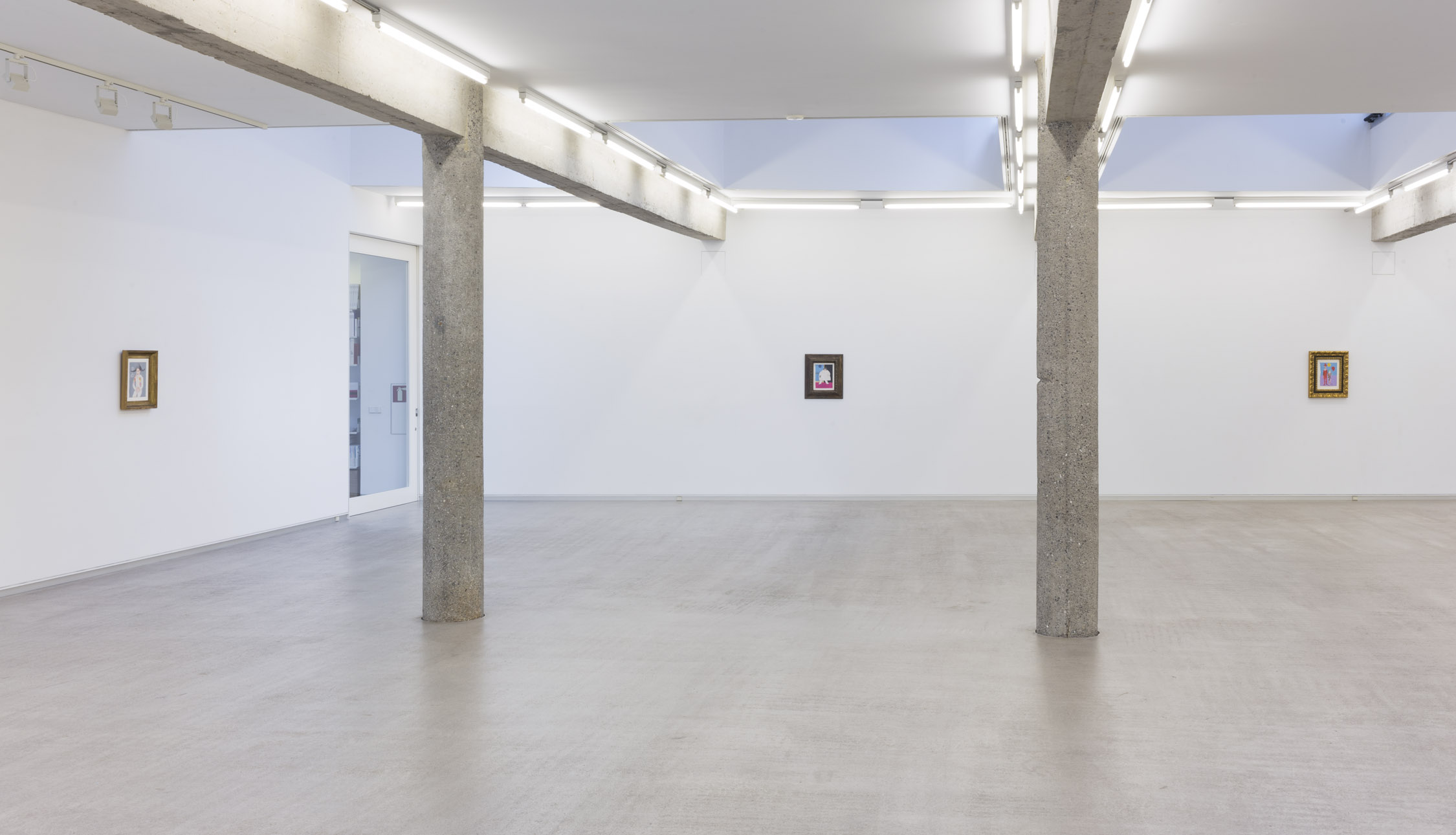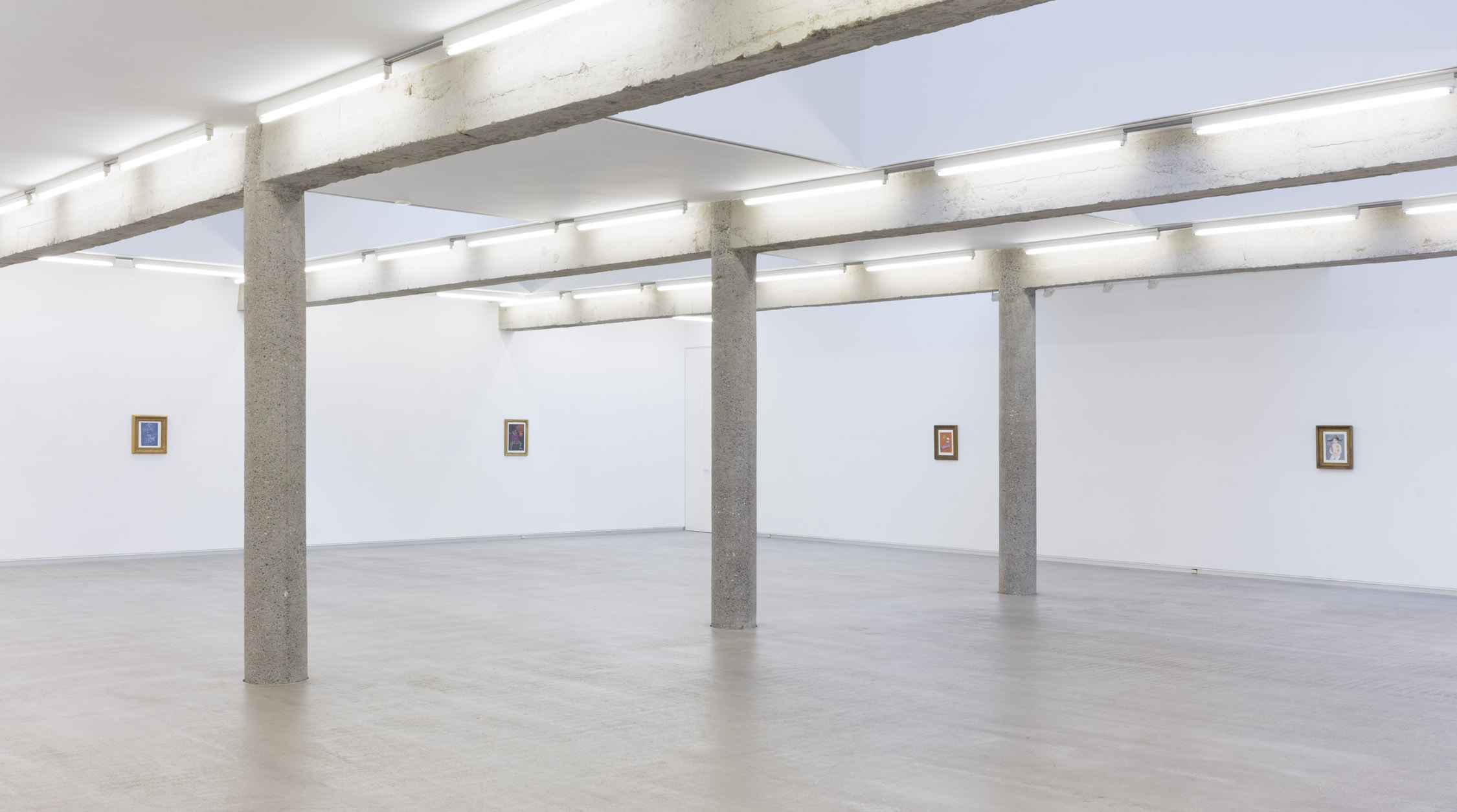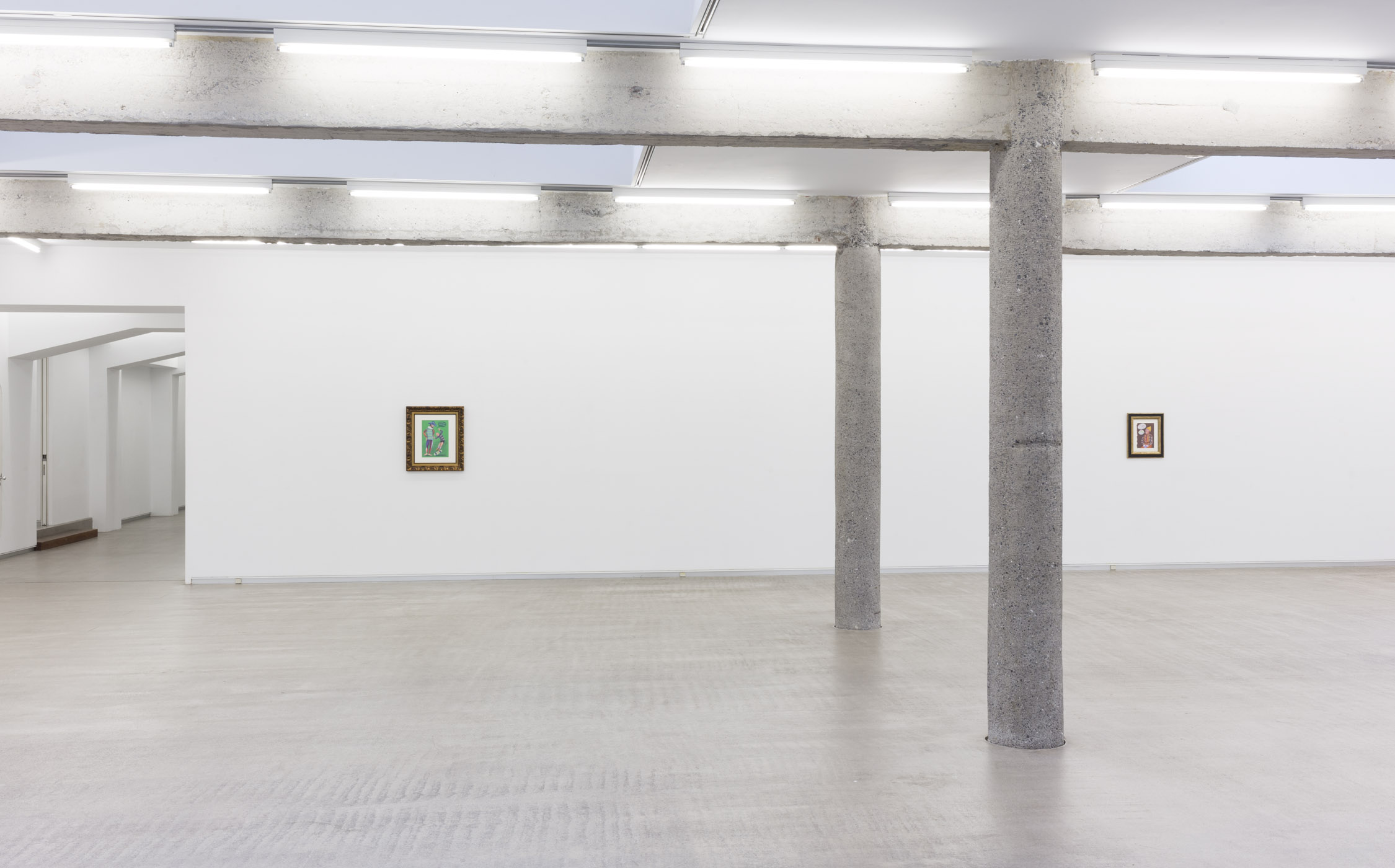Artist: Juan Pérez Agirregoikoa
Exhibition title: A Real Poet Uses Cream
Venue: CarrerasMugica, Bilbao, Spain
Date: March 1 – May 4, 2024
Photography: Ander Sagastiberri / all images copyright and courtesy of the artist and CarrerasMugica, Bilbao
(…) With a beam of light fantastic
the moon illuminates the glass bottles.
Pierrot, with his wax face,
sits pensively and wonders:
how shall I make up today? (…)
“The Dandy”, extract from text by Albert Giraud for Pierrot lunaire, Op. 21 (1912) by Arnold Schönberg
The real poet uses creams and fancy dress, maybe to cover up his failures. And also his triumphs, when they smack of failure. The false poet also uses fancy dress, though you can tell. Or it is easily spotted, like Jean Cocteau when he turned up at Picasso’s studio dressed as Harlequin looking for the artist to paint his portrait. Pierre Cabanne insinuates that the boy wonder of Paris’s cultural scene was a bit of a schemer but Rosalind Krauss bought his story and lends truthfulness to his claim to have introduced Picasso into the history of theatre when all he seemed to be interested in was circus and vaudeville.
Maybe there’s an inkling of truth in it, though it’s more likely that Picasso, sick of his own success, saw in the little pretentious Frenchman a way out of the cubist cohort which he had already begun to repudiate in his work, half-heartedly or, better said, heartlessly. If Cubism was, as Ángel González suggests, a joke of Picasso’s and Braque’s that got out of hand, “its artifice or fabrication to be used by freeloaders who make a living out of it” held up a misshapen mirror to Picasso: the project perverted, the art (Art) sold (out). Though we’re in no position to turn our noses up at capital gains, it still arouses misgivings. With these qualms, in the stage curtain of Parade (1917) he shows us a Harlequin and a Pierrot raising a toast to a little monkey who has climbed to the top of the ladder, apparently hand in hand with a winged tightrope walker. Much easier to understand, under this perception of failure, was the triumphant materialism of the Manager characters that Picasso added to the work behind Cocteau’s back and with the collusion of Erik Satie: silent yet vexing human walking billboards, one French and another American, the only truly “cubist” costumes in the play.
Juan Pérez Agirregoikoa prefers to see in his clowns the final paintings by Alexander Rodchenko, harlequins in multi-coloured brushstrokes (no rhomboids, just blurs) so different from his energetic circus-juggler Pierrots, photographed from below in low angle, magnificent and full of light, like his pioneers. These are ugly paintings, as are those by Pérez Agirregoikoa, though the one’s by the Russian artist are better, as in uglier. The harlequins and clowns of the erstwhile constructivist are melancholic, washed out: they are another deformation of the artist when the project fails, his own and that of his country. In January 1944 he wrote in his diary “…but I’m sick. So sick that no one should know. My song is sung.” There is no heating at home and his only desire is for an American radio powerful enough “to listen to music from abroad”…
In the late-nineties Pérez Agirregoikoa feels as if the space of representation is being lost. The realization of the futility of the project imposes itself: at the end of the twentieth century, he concludes, in agreement with Alain Badiou, that it is impossible to give yourself over to one. Today this impossibility is being challenged, but the artist is still convinced that he doesn’t know how to do it. Struck blind on the road to Damascus, in any case a revelation. This brought an end to a process of searching in painting to which, moreover, nobody had been paying any attention. Music and dance always catch him somewhere else, in the wrong place and at the wrong time, as he says himself.
There’s still the possibility of doing nothing, as Oteiza did, who, after triumphing in Sao Paolo, decided to abandon sculpture and go out into the street, where Pérez Agirregoikoa imagines him placed opposite Chillida, like Punch and Judy anchored to plinths in the public square: in a slapstick fight to conquer empty space. Another exercise in futility.
The project, like all projects, has failed and Harlequin —“dirty romantic Harlequin”— is revealed as the guardian of the lie behind all constructs: cubism, fascism, the Orfeón choral society, mathematics, religion, all religions: culture. Harlequin is the artist himself in his own material futility, with a gesture of triumphant pathos, and also his alter ego, the one who dictates the big truths one can begin to see in banners, sometimes in gunshots —“Chuck Norris the gunslinger is a sight for sore eyes”— or new slogans: “The purported self-reflective experience is a maze of differentiations and not the intuition of unity.”
Young Paul as Harlequin can be dressed up in “various and variegated” options: failure, regression, his father’s love … the artist who needs Paris and New York: who looks for someone to look at him or, like the coronel, someone to write to him. At times, young Paul chooses: Pablito vestido de su rubor, a painting from the same era in which the embodied rhomboids speak of candour or shame, shyness or embarrassment. Even with tenderness, the Harlequin tends towards pathos. That’s why Pérez Agirregoikoa looks for new heroes and so we come across Chanquete, the hero from Verano Azul, a “Txankete”* who symbolizes resistance in defence of his garden, or pesky skaters, adult bumblebees with acne; even (once again) Chuck Norris, the gunslinger with the manicured beard.
Large weighty tomes extol Rodchenko today, yet gloss over his clowns, like prissy, unsettling Lladró figurines. We prefer the triumphant militant artist. And also the unfairly treated artist, which allows us to play the role of redeemers. In August 1943 the Russian artist imagined a future when his daughter and grandchildren, sitting at home in the living-room surrounded by his work could say: “Oh, it’s such a shame father didn’t live to see this, he’s been recognized and people are asking for his works … They buy them … They hang in the museum.” A spent and defeated Pierrot, like Watteau’s Gilles, whose faraway gaze lingers on an imaginary future.
And in the present, the gaze of the fool self-absorbed in his own failure, a waste product of the studio, also begins to attract attention: there is demand, they hang in galleries and in the museum. These ugly harlequins are framed and exhibited. It is, after all, also the product of an era: the transition from indolent adolescence to adulthood without a safety net. No more parapets, excuses and painting prizes for under-thirties. And, dressed as Harlequins, we turn up at the exhibition hall to see if we can find someone to paint us. Or to write to us.
-Rocío Gracia
Juan Pérez Agirregoikoa (Donostia-San Sebastian, 1963) lives and works in Paris. He studied Fine Arts at UPV and at Ecole Nationale Superieure de Beaux-Arts in Paris and Philosophy at Université Paris 8. His work has been exhibited in museums and art centres such as Centre d’Art La Panera (2018) and Artium (2017), Malmo Kosntmuseum (2015),Punk: sus rastros en el arte contemporáneo, MACBA, Barcelona (2015, La ville après les applaudissements, at PavillonVendôme – Centre d’art Contemporain, Clichy (2014); Forever Young at KunsthalleNürnberg (2013), Museo Nacional Centro de Arte Reina Sofía (2012), Museum of Modern Art MUHKA, Antwerp (2008), Norrlands Operan, Umeå, Sweden (2007)and Chacun à son at Museo Guggenheim Bilbao (2007). His work has also been seen in many international group shows including Maquinaciones (Museo Reina Sofía, 2023), Where will we go from here? Twelve art stories told from Spain (Frankfurter Kunstverein, 2022), Active Threads (Kai 10, 2021), Memoria del porvenir (MUSAC, 2021) and Vasos Comunicantes (MNCARS, 2021), MG+MSUM (2020), the Jakarta Biennial (2015), How to (…) things that don’t exist, 31stSao Paulo Biennial (2014) and the Lyon Biennial (2007).He has received many awards and scholarships such as the Gure Artea Prize (2006), the Bancaixa Prize for Painting (1997), a scholarship for creation from MUSAC, Museo de Arte Contemporáneo de Castilla y León (2004), a residency at Fundación La Vaca Independiente, Mexico (1999) and a scholarship for creation from Fundación Banesto (1993).His work is in many museums and collections, among others, MUSAC (Leon), CGAC (Santiago de Compostela), Museo de San Telmo (San Sebastian), Madeira Corporate Services (Madeira), Guggenheim Bilbao, Legion Düsseldorf, MAM Sao Paulo, Iberdrola (Bilbao), MNCARS (Madrid), La Panera (Lleida) and Marugame Hirai Museum (Marugame, Japan).
* Txankete is the Basque spelling of Chanquete, the hero from Verano Azul, an immensely popular Spanish TV series from the early-eighties which still enjoys frequent reruns.
